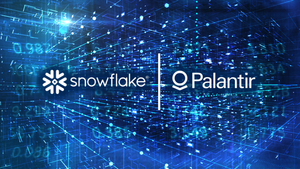
SAN JOSE, CA – October 22, 2025 – Broadcom Inc. (NASDAQ: AVGO) is poised to cement its position as a foundational architect of the artificial intelligence revolution, projecting a staggering 66% year-over-year rise in AI revenues for its fourth fiscal quarter of 2025, reaching approximately $6.2 billion. This remarkable growth is expected to drive an overall 30% climb in its semiconductor sales, totaling around $10.7 billion for the same period. These bullish forecasts, unveiled by CEO Hock Tan during the company's Q3 fiscal 2025 earnings call on September 4, 2025, underscore the profound and accelerating link between advanced AI development and the demand for specialized semiconductor hardware.
The anticipated financial performance highlights Broadcom's strategic pivot and robust execution in delivering high-performance, custom AI accelerators and cutting-edge networking solutions crucial for hyperscale AI data centers. As the AI "supercycle" intensifies, the company's ability to cater to the bespoke needs of tech giants and leading AI labs is translating directly into unprecedented revenue streams, signaling a fundamental shift in the AI hardware landscape. The figures underscore not just Broadcom's success, but the insatiable demand for the underlying silicon infrastructure powering the next generation of intelligent systems.
The Technical Backbone of AI: Broadcom's Custom Silicon and Networking Prowess
Broadcom's projected growth is rooted deeply in its sophisticated portfolio of AI-related semiconductor products and technologies. At the forefront are its custom AI accelerators, known as XPUs (Application-Specific Integrated Circuits or ASICs), which are co-designed with hyperscale clients to optimize performance for specific AI workloads. Unlike general-purpose GPUs (Graphics Processing Units) that serve a broad range of computational tasks, Broadcom's XPUs are meticulously tailored, offering superior performance-per-watt and cost efficiency for large-scale AI training and inference. This approach has allowed Broadcom to secure a commanding 75% market share in the custom ASIC AI accelerator market, with key partnerships including Google (co-developing TPUs for over a decade), Meta Platforms (NASDAQ: META), and a significant, widely reported $10 billion deal with OpenAI for custom AI chips and network systems. Broadcom plans to introduce next-generation XPUs built on advanced 3-nanometer technology in late fiscal 2025, further pushing the boundaries of efficiency and power.
Complementing its custom silicon, Broadcom's advanced networking solutions are critical for linking the vast arrays of AI accelerators in modern data centers. The recently launched Tomahawk 6 – Davisson Co-Packaged Optics (CPO) Ethernet switch delivers an unprecedented 102.4 Terabits per second (Tbps) of optically enabled switching capacity in a single chip, doubling the bandwidth of its predecessor. This leap significantly alleviates network bottlenecks in demanding AI workloads, incorporating "Cognitive Routing 2.0" for dynamic congestion control and rapid failure detection, ensuring optimal utilization and reduced latency. Furthermore, its co-packaged optics design slashes power consumption per bit by up to 40%. Broadcom also introduced the Thor Ultra 800G AI Ethernet Network Interface Card (NIC), the industry's first, designed to interconnect hundreds of thousands of XPUs. Adhering to the open Ultra Ethernet Consortium (UEC) specification, Thor Ultra modernizes RDMA (Remote Direct Memory Access) with innovations like packet-level multipathing and selective retransmission, enabling unparalleled performance and efficiency in an open ecosystem.
The technical community and industry experts have largely welcomed Broadcom's strategic direction. Analysts view Broadcom as a formidable competitor to Nvidia (NASDAQ: NVDA), particularly in the AI networking space and for custom AI accelerators. The focus on custom ASICs addresses the growing need among hyperscalers for greater control over their AI hardware stack, reducing reliance on off-the-shelf solutions. The immense bandwidth capabilities of Tomahawk 6 and Thor Ultra are hailed as "game-changers" for AI networking, enabling the creation of massive computing clusters with over a million XPUs. Broadcom's commitment to open, standards-based Ethernet solutions is seen as a crucial counterpoint to proprietary interconnects, offering greater flexibility and interoperability, and positioning the company as a long-term bullish catalyst in the AI infrastructure build-out.
Reshaping the AI Competitive Landscape: Broadcom's Strategic Advantage
Broadcom's surging AI and semiconductor growth has profound implications for the competitive landscape, benefiting several key players while intensifying pressure on others. Directly, Broadcom Inc. (NASDAQ: AVGO) stands to gain significantly from the escalating demand for its specialized silicon and networking products, solidifying its position as a critical infrastructure provider. Hyperscale cloud providers and AI labs such as Google (NASDAQ: GOOGL), Meta Platforms (NASDAQ: META), ByteDance, and OpenAI are major beneficiaries, leveraging Broadcom's custom AI accelerators to optimize their unique AI workloads, reduce vendor dependence, and achieve superior cost and energy efficiency for their vast data centers. Taiwan Semiconductor Manufacturing Company (NYSE: TSM), as a primary foundry for Broadcom, also stands to gain from the increased demand for advanced chip production and packaging. Furthermore, providers of High-Bandwidth Memory (HBM) like SK Hynix and Micron Technology (NASDAQ: MU), along with cooling and power management solution providers, will see boosted demand driven by the complexity and power requirements of these advanced AI chips.
The competitive implications are particularly acute for established players in the AI chip market. Broadcom's aggressive push into custom ASICs and advanced Ethernet networking directly challenges Nvidia's long-standing dominance in general-purpose GPUs and its proprietary NVLink interconnect. While Nvidia is likely to retain leadership in highly demanding AI training scenarios, Broadcom's custom ASICs are gaining significant traction in large-scale inference and specialized AI applications due to their efficiency. OpenAI's multi-year collaboration with Broadcom for custom AI accelerators is a strategic move to diversify its supply chain and reduce its dependence on Nvidia. Similarly, Broadcom's success poses a direct threat to Advanced Micro Devices (NASDAQ: AMD) efforts to expand its market share in AI accelerators, especially in hyperscale data centers. The shift towards custom silicon could also put pressure on companies historically focused on general-purpose CPUs for data centers, like Intel (NASDAQ: INTC).
This dynamic introduces significant disruption to existing products and services. The market is witnessing a clear shift from a sole reliance on general-purpose GPUs to a more heterogeneous mix of AI accelerators, with custom ASICs offering superior performance and energy efficiency for specific AI workloads, particularly inference. Broadcom's advanced networking solutions, such as Tomahawk 6 and Thor Ultra, are crucial for linking vast AI clusters and represent a direct challenge to proprietary interconnects, enabling higher speeds, lower latency, and greater scalability that fundamentally alter AI data center design. Broadcom's strategic advantages lie in its leadership in custom AI silicon, securing multi-year collaborations with leading tech giants, its dominant market position in Ethernet switching chips for cloud data centers, and its offering of end-to-end solutions that span both semiconductor and infrastructure software.
Broadcom's Role in the AI Supercycle: A Broader Perspective
Broadcom's projected growth is more than just a company success story; it's a powerful indicator of several overarching trends defining the current AI landscape. First, it underscores the explosive and seemingly insatiable demand for specialized AI infrastructure. The AI sector is in the midst of an "AI supercycle," characterized by massive, sustained investments in the computing backbone necessary to train and deploy increasingly complex models. Global semiconductor sales are projected to reach $1 trillion by 2030, with AI and cloud computing as primary catalysts, and Broadcom is clearly riding this wave.
Second, Broadcom's prominence highlights the undeniable rise of custom silicon (ASICs or XPUs) as the next frontier in AI hardware. As AI models grow to trillions of parameters, general-purpose GPUs, while still vital, are increasingly being complemented or even supplanted by purpose-built ASICs. Companies like OpenAI are opting for custom silicon to achieve optimal performance, lower power consumption, and greater control over their AI stacks, allowing them to embed model-specific learning directly into the hardware for new levels of capability and efficiency. This shift, enabled by Broadcom's expertise, fundamentally impacts AI development by providing highly optimized, cost-effective, and energy-efficient processing power, accelerating innovation and enabling new AI capabilities.
However, this rapid evolution also brings potential concerns. The heavy reliance on a few advanced semiconductor manufacturers for cutting-edge nodes and advanced packaging creates supply chain vulnerabilities, exacerbated by geopolitical tensions. While Broadcom is emerging as a strong competitor, the economic profit in the AI semiconductor industry remains highly concentrated among a few dominant players, raising questions about market concentration and potential long-term impacts on pricing and innovation. Furthermore, the push towards custom silicon, while offering performance benefits, can also lead to proprietary ecosystems and vendor lock-in.
Comparing this era to previous AI milestones, Broadcom's role in the custom silicon boom is akin to the advent of GPUs in the late 1990s and early 2000s. Just as GPUs, particularly with Nvidia's CUDA, enabled the parallel processing crucial for the rise of deep learning and neural networks, custom ASICs are now unlocking the next level of performance and efficiency required for today's massive generative AI models. This "supercycle" is characterized by a relentless pursuit of greater efficiency and performance, directly embedding AI knowledge into hardware design. While Broadcom's custom XPUs are proprietary, the company's commitment to open standards in networking with its Ethernet solutions provides flexibility, allowing customers to build tailored AI architectures by mixing and matching components. This mixed approach aims to leverage the best of both worlds: highly optimized, purpose-built hardware coupled with flexible, standards-based connectivity for massive AI deployments.
The Horizon: Future Developments and Challenges in Broadcom's AI Journey
Looking ahead, Broadcom's trajectory in AI and semiconductors promises continued innovation and expansion. In the near-term (next 12-24 months), the multi-year collaboration with OpenAI, announced in October 2025, will see the co-development and deployment of 10 gigawatts of OpenAI-designed custom AI accelerators and networking systems, with rollouts beginning in mid-2026 and extending through 2029. This landmark partnership, potentially worth up to $200 billion in incremental revenue for Broadcom through 2029, will embed OpenAI's frontier model insights directly into the hardware. Broadcom will also continue advancing its custom XPUs, including the upcoming Google TPU v7 roadmap, and rolling out next-generation 3-nanometer XPUs in late fiscal 2025. Its advanced networking solutions, such as the Jericho3-AI and Ramon3 fabric chip, are expected to qualify for production, aiming for at least 10% shorter job completion times for AI accelerators. Furthermore, Broadcom's Wi-Fi 8 silicon solutions will extend AI capabilities to the broadband wireless edge, enabling AI-driven network optimization and enhanced security.
Longer-term, Broadcom is expected to maintain its leadership in custom AI chips, with analysts predicting it could capture over $60 billion in annual AI revenue by 2030, assuming it sustains its dominant market share. The AI infrastructure expansion fueled by partnerships like OpenAI will see tighter integration and control over hardware by AI companies. Broadcom is also transitioning into a more balanced hardware-software provider, with the successful integration of VMware (NASDAQ: VMW) bolstering its recurring revenue streams. These advancements will enable a wide array of applications, from powering hyperscale AI data centers for generative AI and large language models to enabling localized intelligence in IoT devices and automotive systems through Edge AI. Broadcom's infrastructure software, enhanced by AI and machine learning, will also drive AIOps solutions for more intelligent IT operations.
However, this rapid growth is not without its challenges. The immense power consumption and heat generation of next-generation AI accelerators necessitate sophisticated liquid cooling systems and ever more energy-efficient chip architectures. Broadcom is addressing this through power-efficient custom ASICs and CPO solutions. Supply chain resilience remains a critical concern, particularly for advanced packaging, with geopolitical tensions driving a restructuring of the semiconductor supply chain. Broadcom is collaborating with TSMC for advanced packaging and processes, including 3.5D packaging for its XPUs. Fierce competition from Nvidia, AMD, and Intel, alongside the increasing trend of hyperscale customers developing in-house chips, could also impact future revenue. While Broadcom differentiates itself with custom silicon and open, Ethernet-based networking, Nvidia's CUDA software ecosystem remains a dominant force, presenting a continuous challenge.
Despite these hurdles, experts are largely bullish on Broadcom's future. It is widely seen as a "strong second player" after Nvidia in the AI chip market, with some analysts even predicting it could outperform Nvidia in 2026. Broadcom's strategic partnerships and focus on custom silicon are positioning it as an "indispensable force" in AI supercomputing infrastructure. Analysts project AI semiconductor revenue to reach $6.2 billion in Q4 2025 and potentially surpass $10 billion annually by 2026, with overall revenue expected to increase over 21% for the current fiscal year. The consensus is that tech giants will significantly increase AI spending, with the overall AI and data center hardware and software market expanding at 40-55% annually towards $1.4 trillion by 2027, ensuring a continued "arms race" in AI infrastructure where custom silicon will play an increasingly central role.
A New Epoch in AI Hardware: Broadcom's Defining Moment
Broadcom's projected 66% year-over-year surge in AI revenues and 30% climb in semiconductor sales for Q4 fiscal 2025 mark a pivotal moment in the history of artificial intelligence. The key takeaway is Broadcom's emergence as an indispensable architect of the modern AI infrastructure, driven by its leadership in custom AI accelerators (XPUs) and high-performance, open-standard networking solutions. This performance not only validates Broadcom's strategic focus but also underscores a fundamental shift in how the world's largest AI developers are building their computational foundations. The move towards highly optimized, custom silicon, coupled with ultra-fast, efficient networking, is shaping the next generation of AI capabilities.
This development's significance in AI history cannot be overstated. It represents the maturation of the AI hardware ecosystem beyond general-purpose GPUs, entering an era where specialized, co-designed silicon is becoming paramount for achieving unprecedented scale, efficiency, and cost-effectiveness for frontier AI models. Broadcom is not merely supplying components; it is actively co-creating the very infrastructure that will define the capabilities of future AI. Its partnerships, particularly with OpenAI, are testament to this, enabling AI labs to embed their deep learning insights directly into the hardware, unlocking new levels of performance and control.
As we look to the long-term impact, Broadcom's trajectory suggests an acceleration of AI development, fostering innovation by providing the underlying horsepower needed for more complex models and broader applications. The company's commitment to open Ethernet standards also offers a crucial alternative to proprietary ecosystems, potentially fostering greater interoperability and competition in the long run.
In the coming weeks and months, the tech world will be watching for several key developments. The actual Q4 fiscal 2025 earnings report, expected soon, will confirm these impressive projections. Beyond that, the progress of the OpenAI custom accelerator deployments, the rollout of Broadcom's 3-nanometer XPUs, and the competitive responses from other semiconductor giants like Nvidia and AMD will be critical indicators of the evolving AI hardware landscape. Broadcom's current momentum positions it not just as a beneficiary, but as a defining force in the AI supercycle, laying the groundwork for an intelligent future.
This content is intended for informational purposes only and represents analysis of current AI developments.
TokenRing AI delivers enterprise-grade solutions for multi-agent AI workflow orchestration, AI-powered development tools, and seamless remote collaboration platforms.
For more information, visit https://www.tokenring.ai/.






